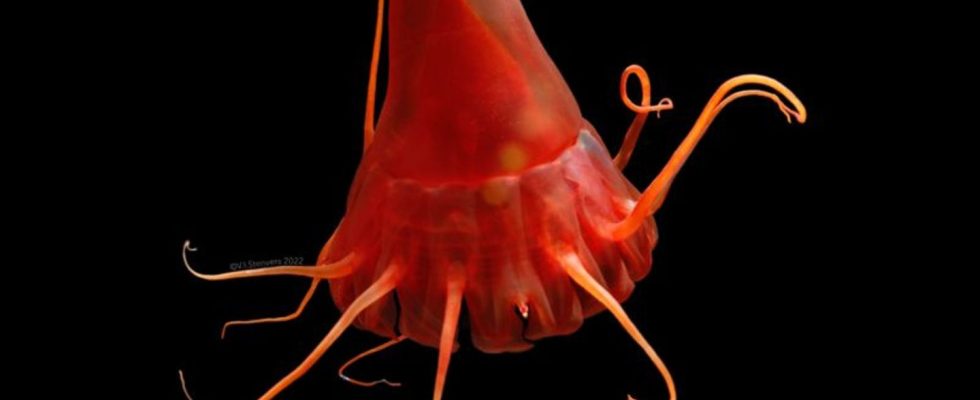Environment
Sediments from deep-sea mining could cause a lot of stress to animals
A helmet jellyfish (Periphylla periphylla) in the North Pacific. photo
© Vanessa Stenvers/Geomar/dpa
Some do not want to give up the mineral resources on the seabed, others warn of consequences for the sensitive ecosystems of the depths that are currently difficult to estimate.
When mining raw materials on the seabed, such as manganese nodules, fine sediments are stirred up, Geomar said. Clouds of sediment could spread tens to hundreds of kilometers and affect animals not only on the seabed, but also between 200 and 4,000 meters water depth – the so-called pelagic. Since there is usually little sediment in this zone, it can be assumed that animals in this area react very sensitively to the sediment clouds caused by mining.
The pelagic inhabitants are the main food source for many fish, squid and marine mammals and therefore represent an important link in the marine food web, explained co-author Helena Hauss from the Norwegian Research Center (Norce). “They have evolved under far more stable conditions than surface-dwelling animals and are therefore potentially more vulnerable to changing environmental conditions.”
Risk to Pelagial Inhabitants
Determining the stress level of a jellyfish is not that easy, explained Geomar researcher Vanessa Stenvers. Changes in physiology, gene activity and microbes on the animals were taken into account. The most noticeable visible effect was the adhesion of sediment particles to the jellyfish – whereupon the jellyfish began to produce excess mucus.
“Although mucus helps jellyfish keep their microbiome stable, continuous mucus production requires a lot of energy and can represent a significant portion of an animal’s total energy budget,” Stenvers explained. When there is a lot of sediment in the water, the activity of genes related to breathing, the immune system and wound healing increases significantly.
Stress factors that lead to increased energy consumption must be compensated for with increased food intake, explained the research team. However, food is usually scarce in the deep sea – with sediment in the water, the risk of starvation for pelagic inhabitants could increase.
Critics warn of environmental catastrophe
The commercial mining of raw materials on the bottom of international seas poses risks for the ecosystems there that cannot yet be foreseen – discussions on how to deal with deep-sea mining ended in the summer without any binding decisions. At the meeting of the Council of the International Seabed Authority (ISA), the 36 member states only agreed on the goal of adopting a set of rules in 2025.
No concrete solution has also been decided on how to decide on deep-sea mining applications, which can now be submitted to the ISA for the first time. The Pacific state of Nauru announced some time ago that it wanted to mine manganese nodules on the seabed at a depth of 4,000 to 6,000 meters with the Canadian company The Metals Company (TMC). Such ancient associations contain raw materials such as manganese, cobalt, copper and nickel that could be used to make batteries for electric cars.
Critics warn of an avoidable environmental catastrophe. Many countries have not yet taken a clear position on deep-sea mining. The USA is not an ISA member state. China has signaled that it wants to focus on deep-sea mining.

